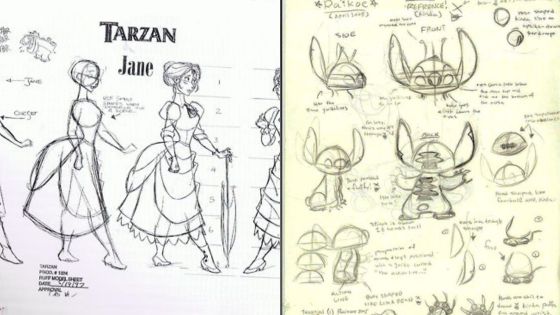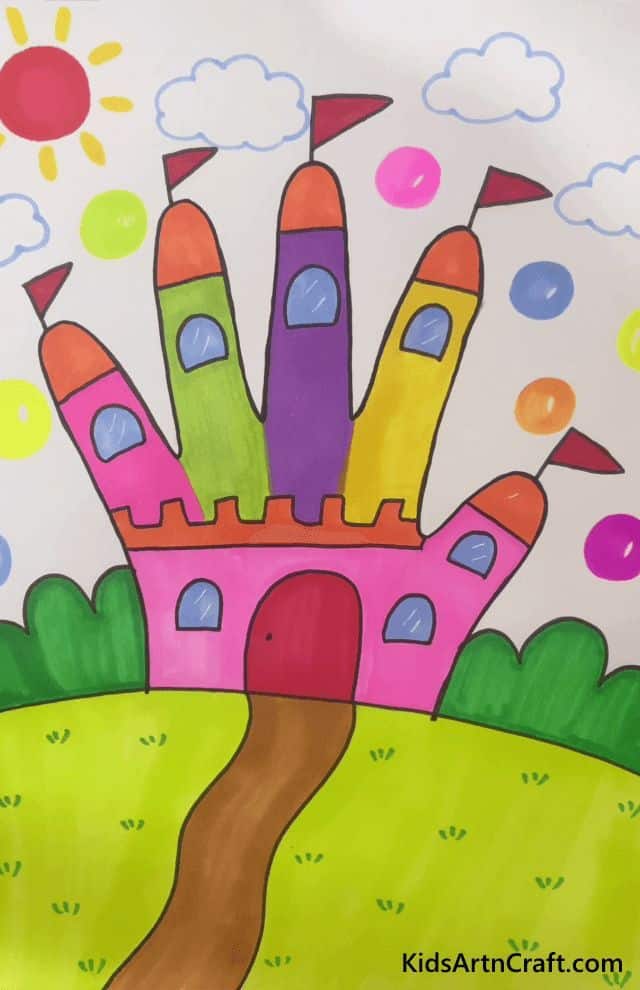
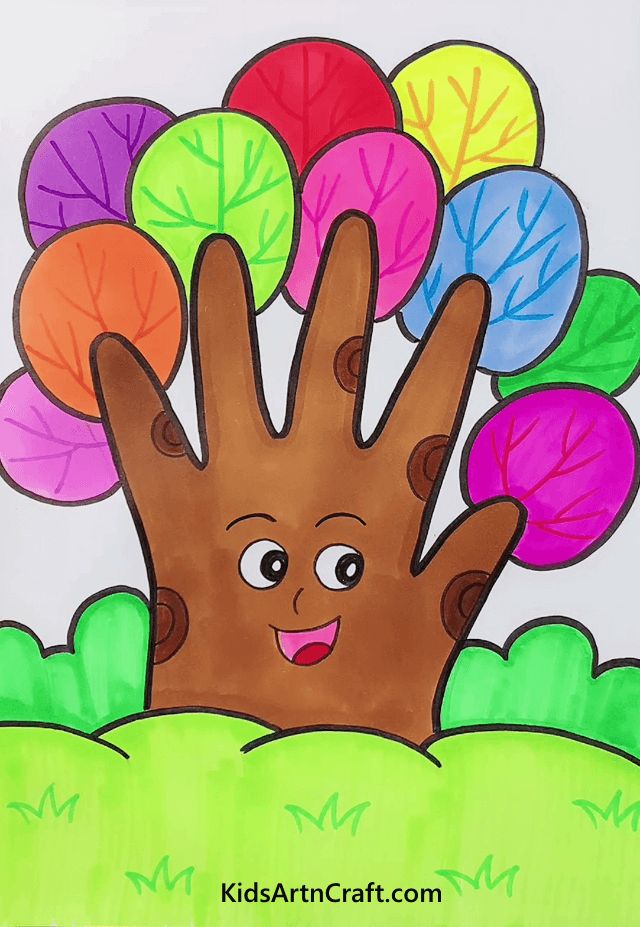
The world of childhood is a vibrant tapestry woven with curiosity, imagination, and a relentless drive to explore. Among the myriad ways children discover and express themselves, drawing stands out as a fundamental, universally accessible activity. Encouraging engaging and educational draws for kids is not merely about nurturing a potential artist; it’s about unlocking a powerful toolkit for cognitive, emotional, and motor skill development. From the earliest scribbles to more complex representations, the act of putting crayon to paper, brush to canvas, or finger to screen offers profound benefits that extend far beyond the art pad. This exploration delves into how drawing fosters creativity, enhances learning, and provides a crucial outlet for expression, guiding parents and educators in cultivating this invaluable skill.
Pros and Cons
| Pros | Cons |
|---|---|
| – Boosts creativity and imagination | – Initial mess and clean-up required |
| – Develops fine motor skills and hand-eye coordination | – Frustration if expectations are too high |
| – Enhances problem-solving and critical thinking | – Cost of art supplies can add up |
| – Provides an outlet for emotional expression | – Limited space for large-scale projects |
| – Improves focus and concentration | – Potential for “I can’t draw” mindset |
The Profound Benefits of Drawing for Children
Drawing is far more than a pastime; it’s a critical developmental activity that lays foundational skills for future learning and success. When a child engages in drawing, they are simultaneously activating multiple areas of their brain, leading to a cascade of benefits that shape their growth.
Cognitive Development
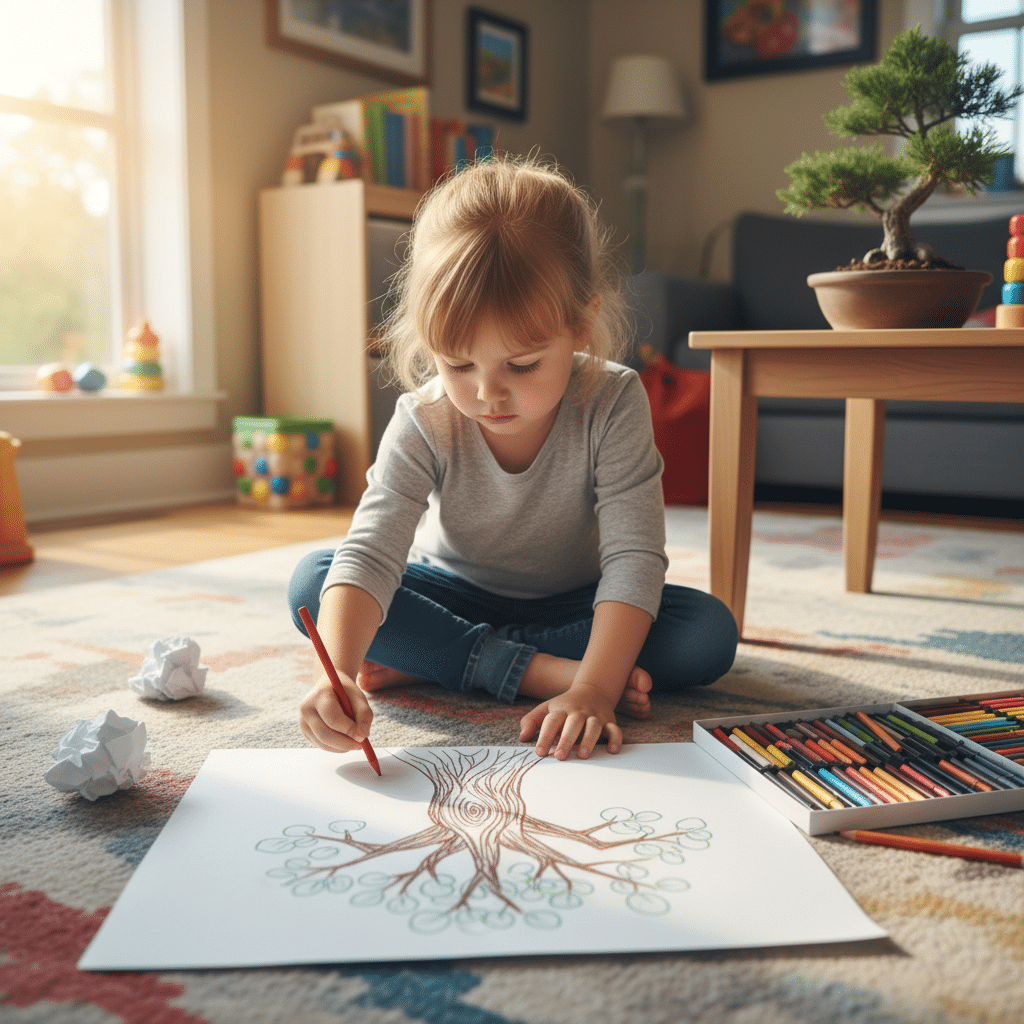
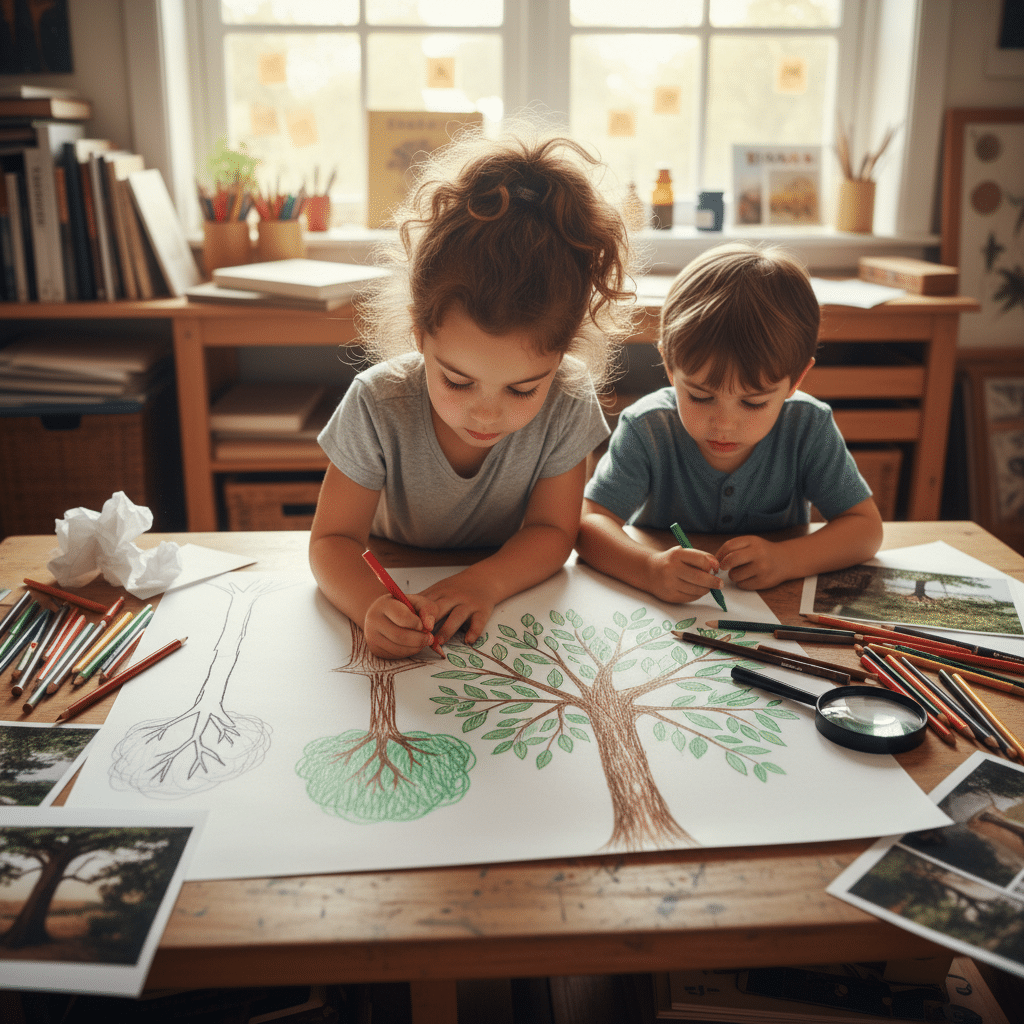
The act of drawing compels children to observe, analyze, and interpret the world around them. They must consider shapes, sizes, spatial relationships, and how objects interact. This process sharpens their observational skills, encouraging them to pay closer attention to details. For instance, when drawing a tree, a child might notice the texture of the bark, the branching patterns, or the way leaves cluster. This active processing of visual information is a form of problem-solving, enhancing their critical thinking abilities. Furthermore, drawing helps children develop abstract thinking as they translate three-dimensional objects or abstract ideas into two-dimensional representations.
Fine Motor Skills Enhancement
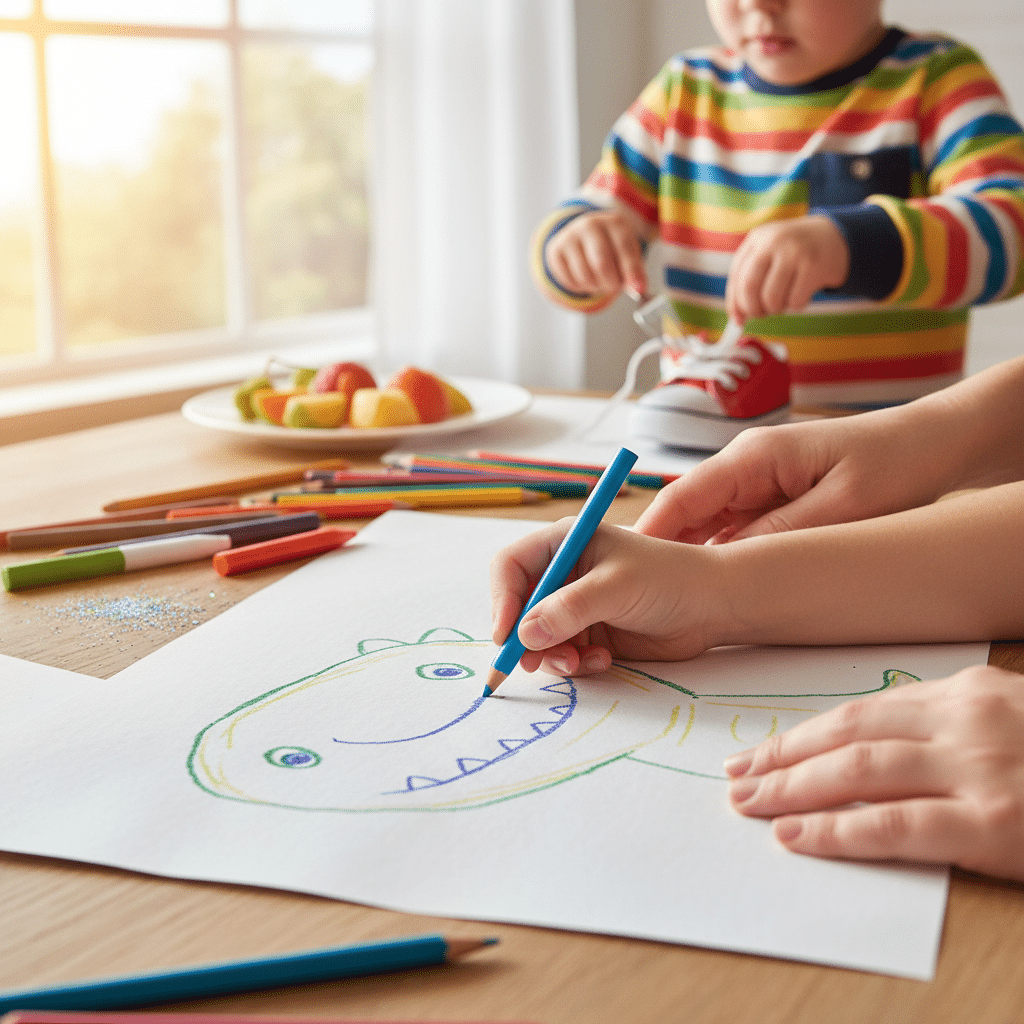
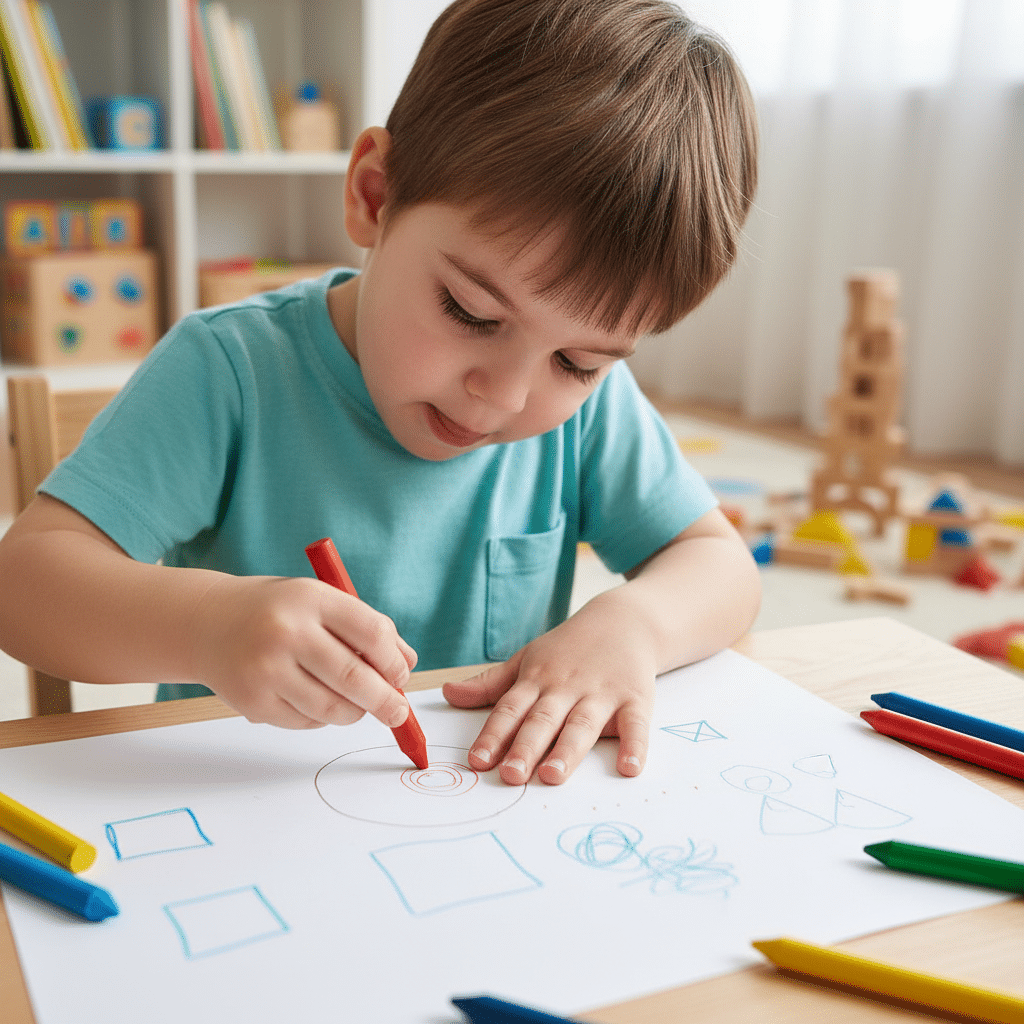
From gripping a crayon to meticulously outlining a shape, drawing activities are a powerful workout for a child’s fine motor skills. The precision required strengthens the small muscles in their hands and fingers, improving dexterity and hand-eye coordination. These skills are crucial not only for artistic endeavors but also for essential daily tasks such as writing, buttoning clothes, tying shoelaces, and using utensils. Consistent drawing practice refines these movements, preparing children for academic challenges and fostering independence.
Emotional Expression and Regulation
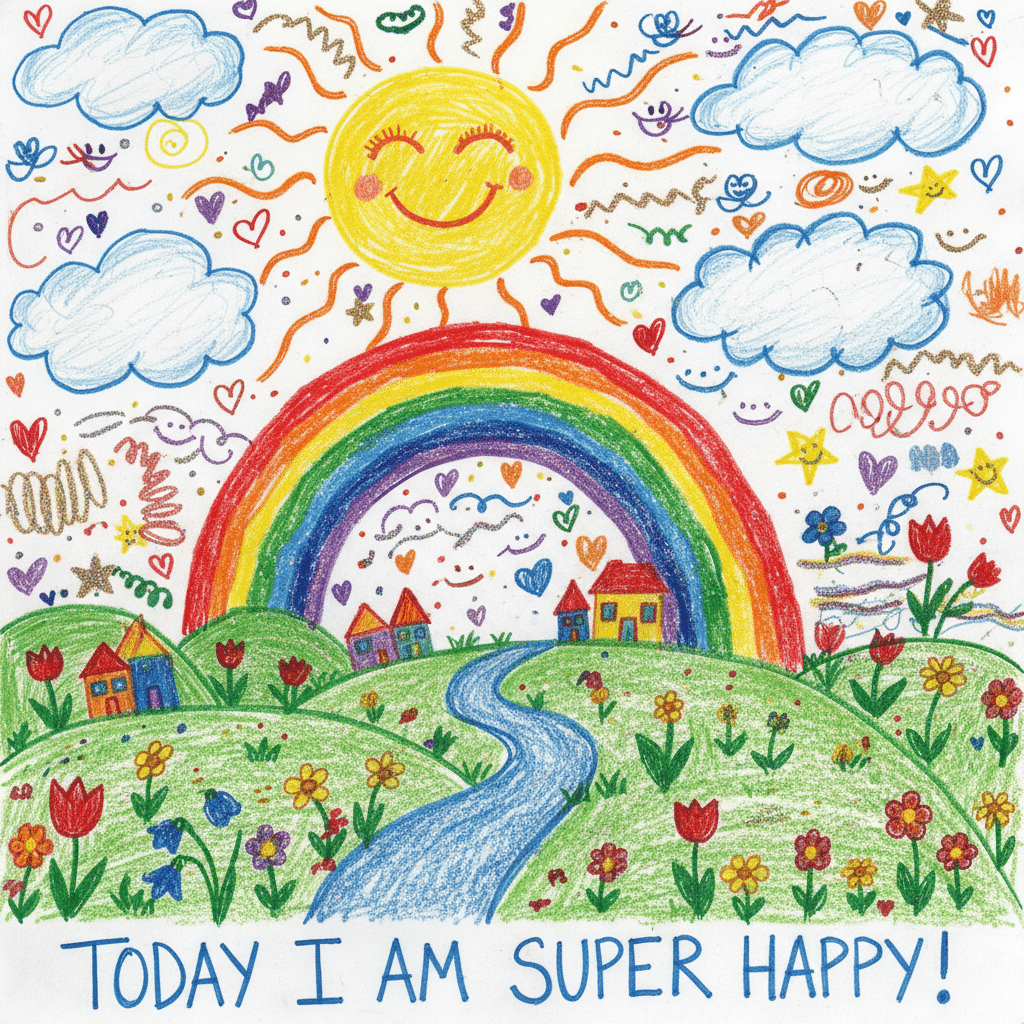

Children often lack the vocabulary to articulate complex emotions. Drawing provides a non-verbal language, a safe and accessible channel through which they can express feelings, thoughts, and experiences that might otherwise remain unspoken. A child feeling happy might draw a vibrant, sunny landscape, while one feeling upset might use darker colors or more abstract shapes. This creative outlet allows them to externalize and process their inner world, fostering emotional literacy and providing a healthy coping mechanism for stress or anxiety. Art therapy, for instance, frequently utilizes drawing to help individuals of all ages navigate emotional challenges.
Boosts Creativity and Imagination
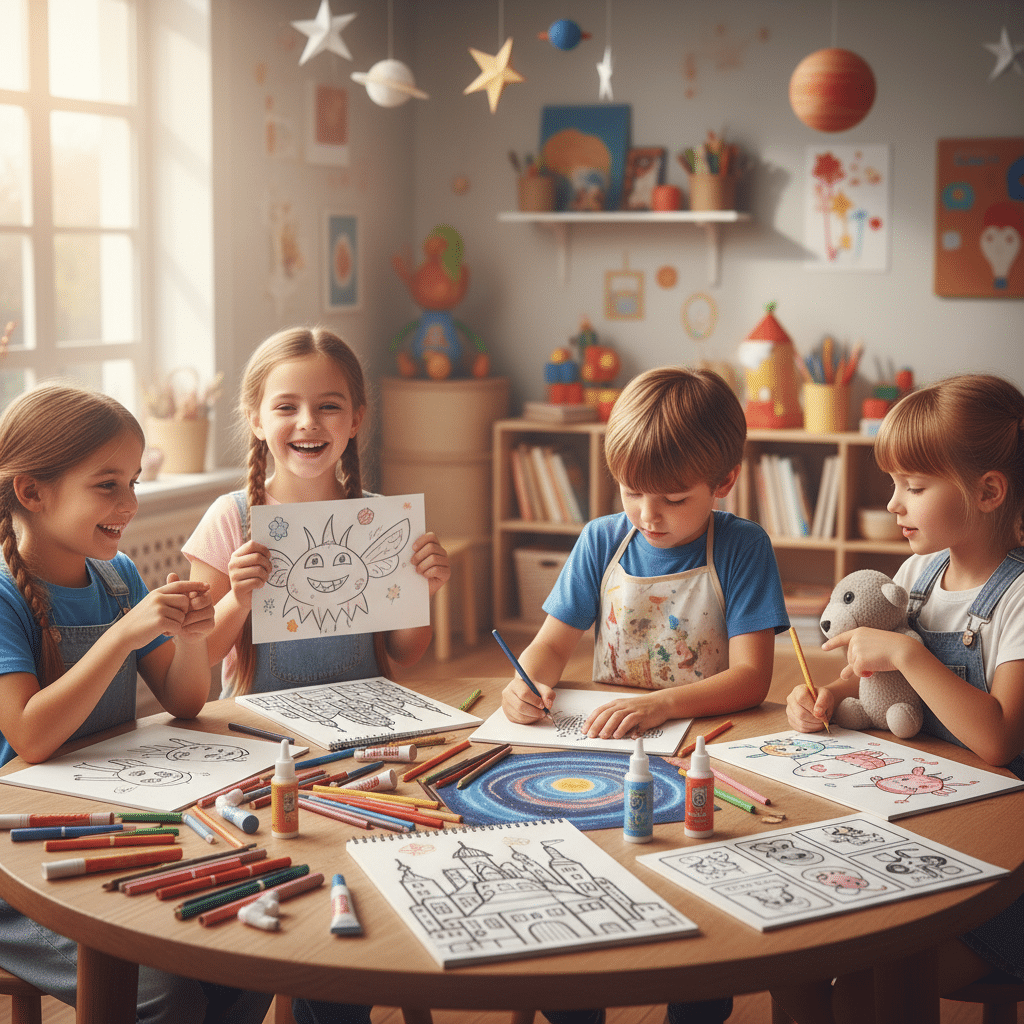
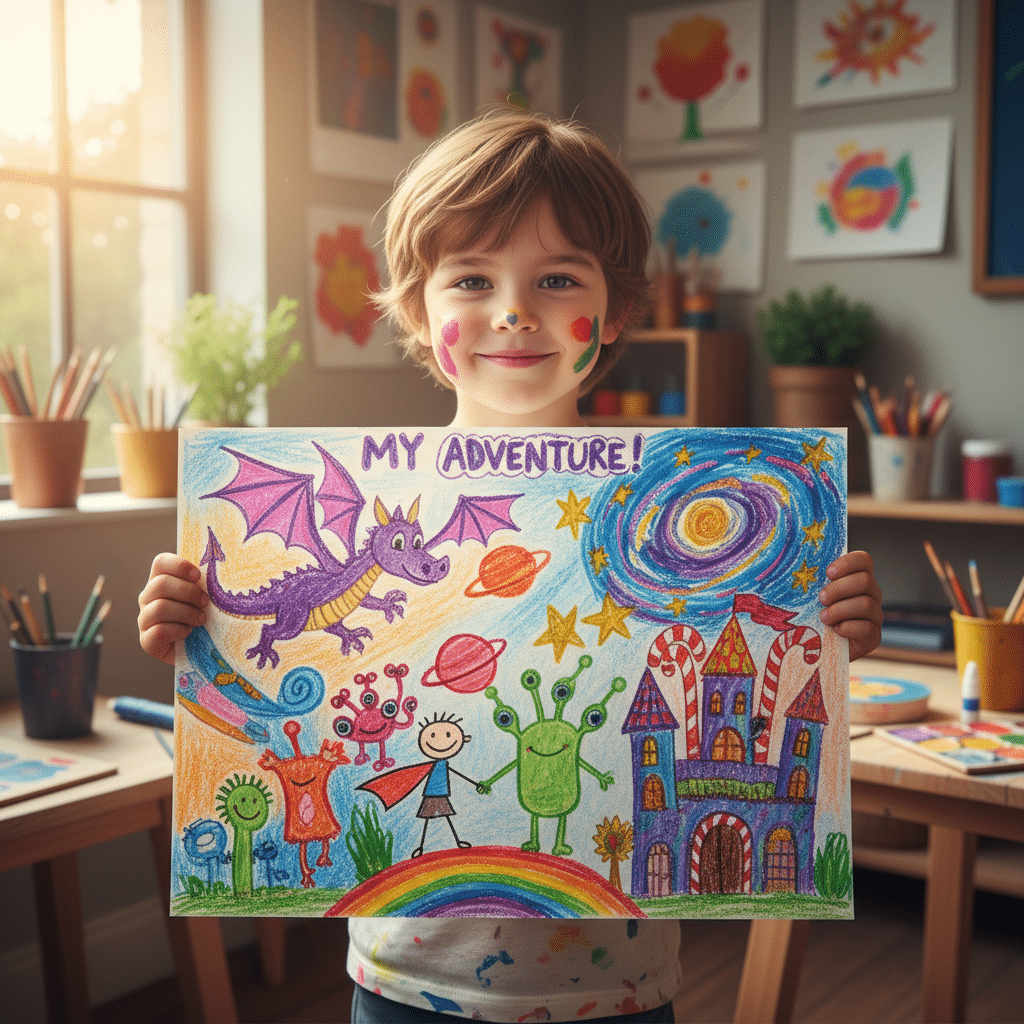
At its core, drawing is an act of creation. It invites children to imagine possibilities, invent characters, design worlds, and tell stories that exist only in their minds. This boundless freedom cultivates imaginative thinking and problem-solving. Children learn that there isn’t one “right” way to draw something, fostering divergent thinking—the ability to generate multiple solutions or ideas. This creative confidence extends beyond the art table, empowering them to approach academic and real-world challenges with innovative solutions.
Language and Communication Skills


While non-verbal, drawing significantly contributes to language development. As children draw, they often narrate their process, describe their creations, or invent stories about their characters. This internal monologue or external dialogue reinforces vocabulary, sentence structure, and storytelling abilities. When they share their artwork with others, they practice explaining their ideas, answering questions, and engaging in descriptive communication. Studies have shown a correlation between early drawing skills and later literacy, suggesting drawing acts as a pre-writing exercise that strengthens symbolic representation.
Improved Focus and Concentration
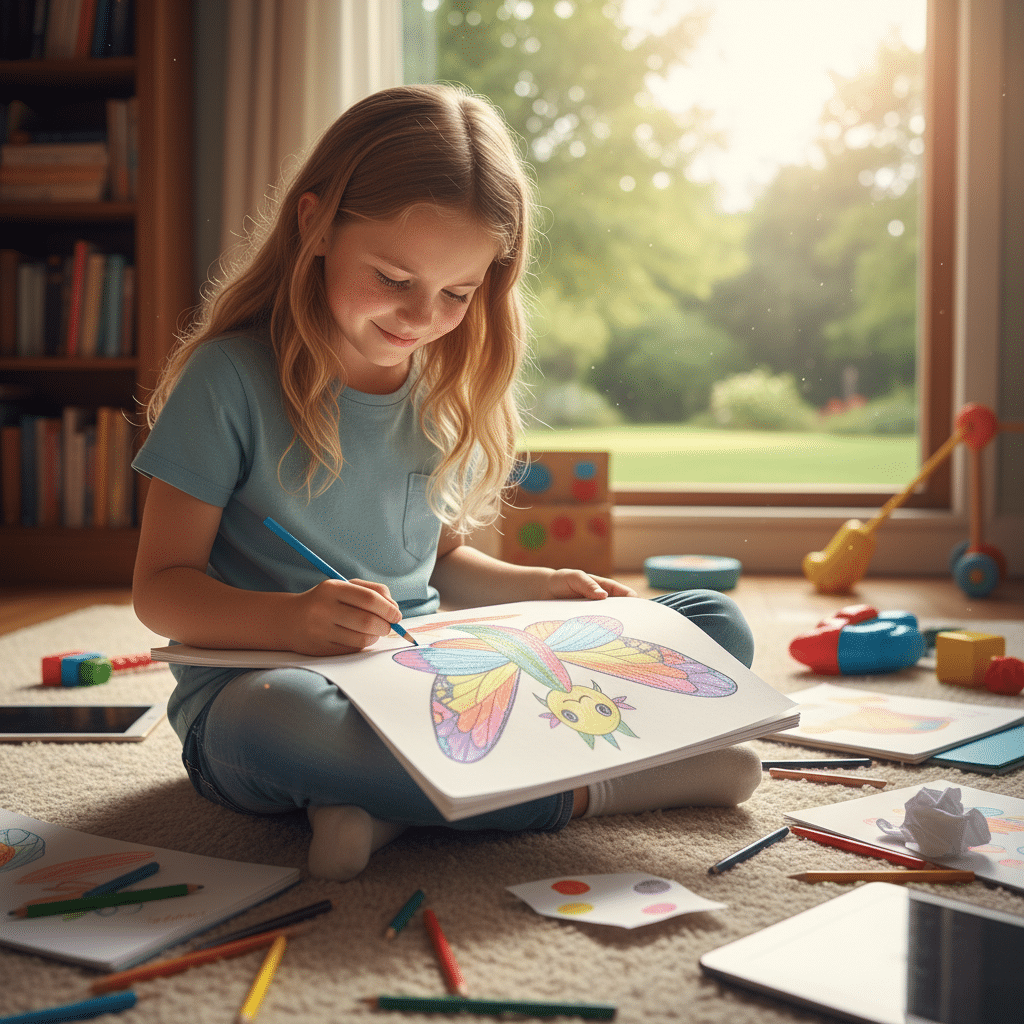
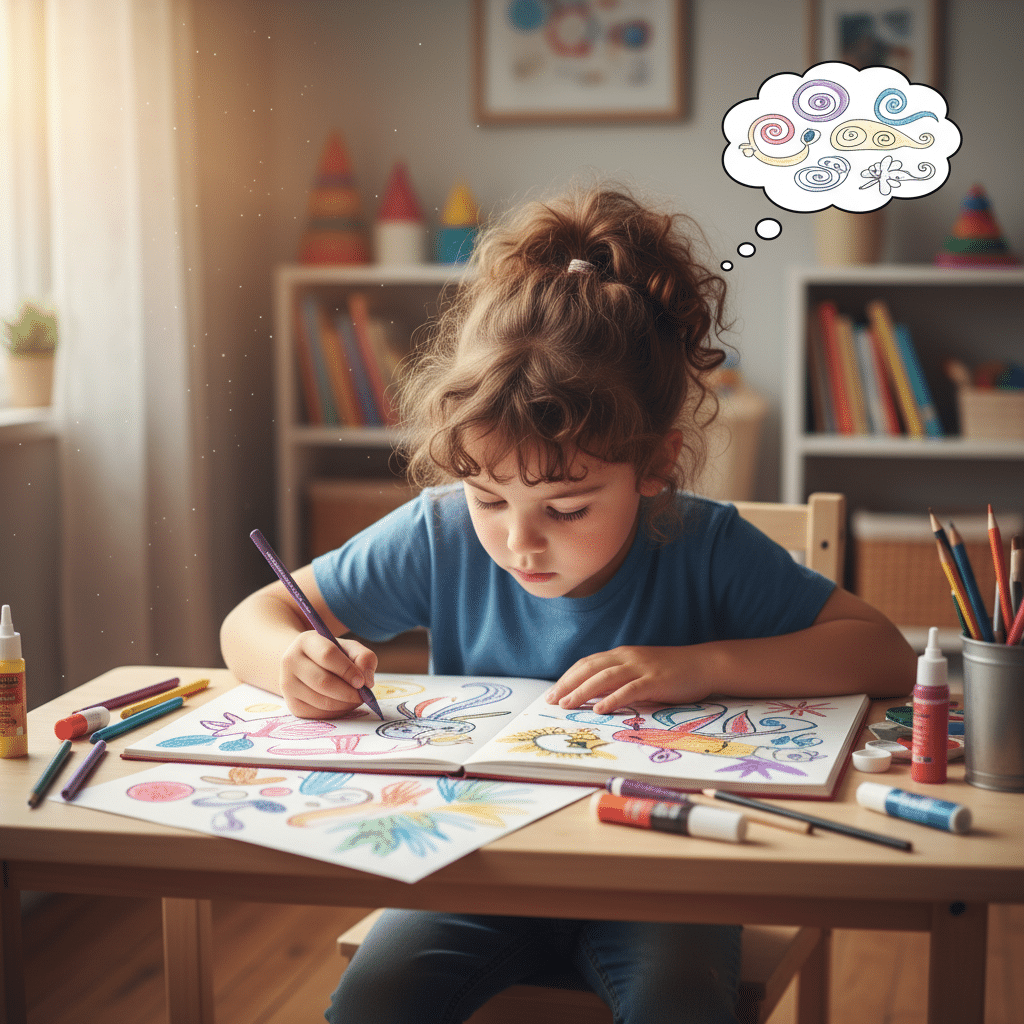
In an increasingly distracting world, the ability to focus is a prized skill. Drawing naturally demands sustained attention. Children become absorbed in their artwork, tuning out external distractions as they concentrate on their lines, colors, and compositions. This intense focus, often described as “flow state,” builds their capacity for sustained concentration, a skill highly beneficial for academic learning and any task requiring deep engagement.
Stress Reduction
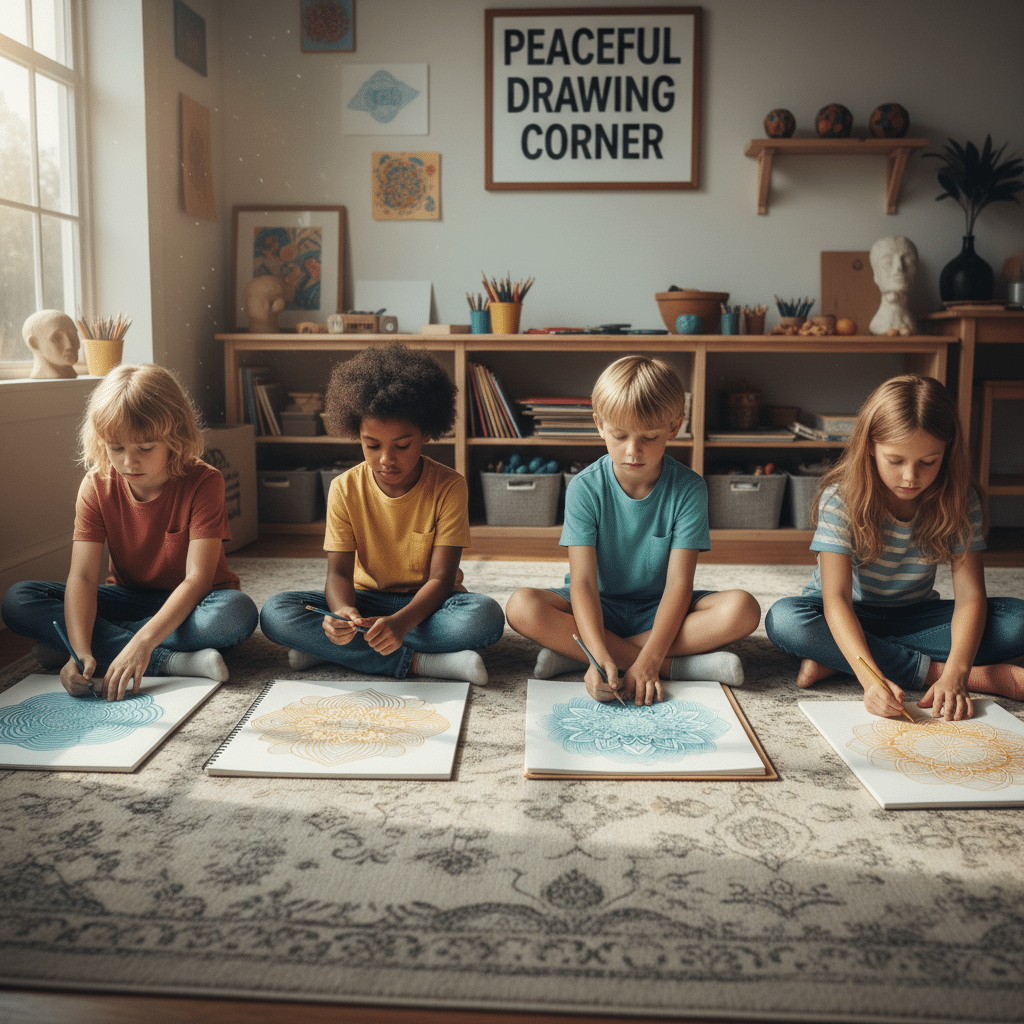
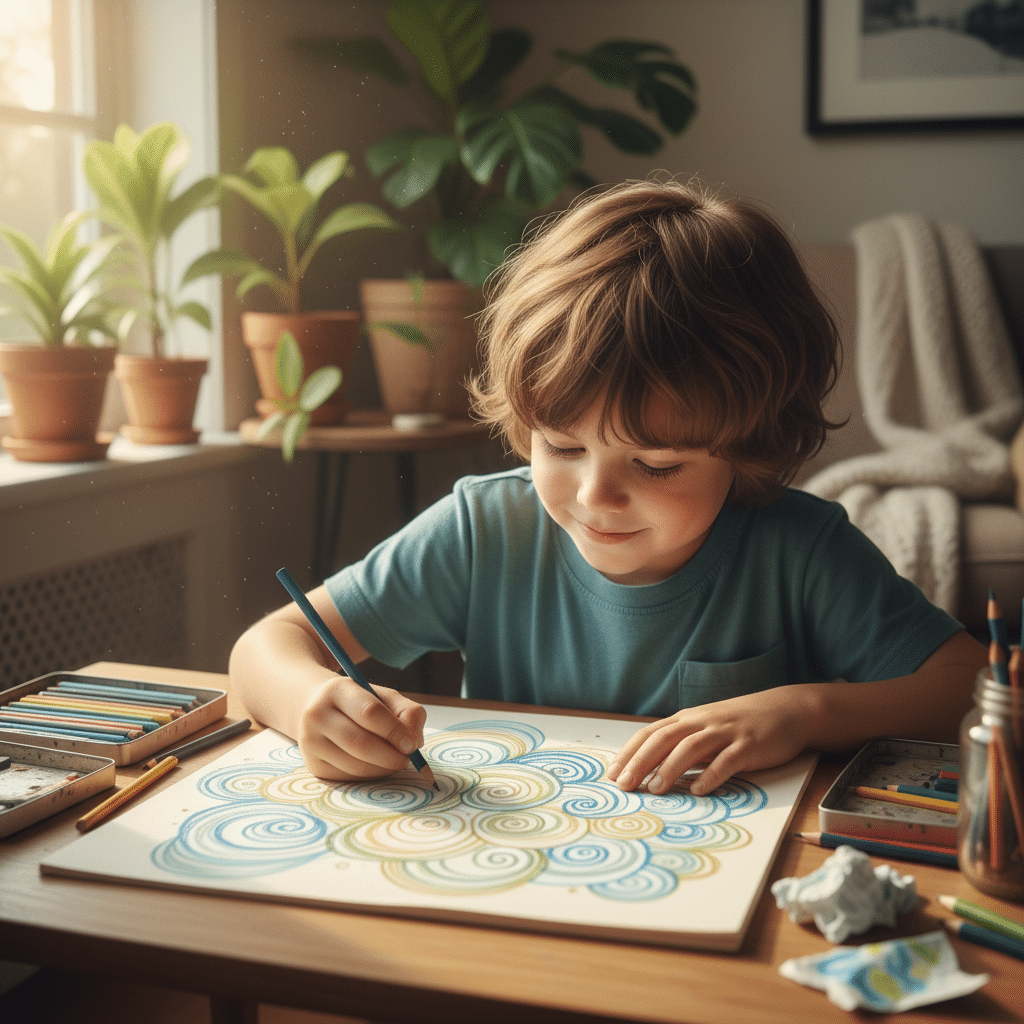
The rhythmic and repetitive nature of drawing can be incredibly calming. It provides a mindful activity that allows children to slow down, relax, and channel their energy into a productive and enjoyable pursuit. This stress-reducing quality makes drawing a valuable tool for promoting mental well-being, offering a peaceful escape from the pressures of daily life or overwhelming emotions.
Age-Appropriate Drawing Activities: A Developmental Guide
Understanding a child’s developmental stage is key to providing appropriate and engaging drawing experiences. What excites a toddler will likely frustrate a pre-teen, and vice-versa. Tailoring activities to their cognitive and motor capabilities ensures maximum engagement and benefit.
Toddlers (1-3 years): Scribbling and Sensory Exploration


For toddlers, drawing is primarily a sensory and motor experience. The focus isn’t on creating recognizable images but on the process itself—the feel of the crayon, the mark it leaves, the movement of their arm.
- Materials: Large, non-toxic crayons or chunky markers that are easy to grip. Finger paints offer a fantastic tactile experience. Washable paints are a must.
- Activities: Encourage free scribbling on large sheets of paper, cardboard, or even a designated washable surface. Introduce different textures of paper. Let them explore the sensation of paint on their fingers. Supervise closely to ensure safety and prevent ingestion of materials.
- Approach: Celebrate every mark! Praise their effort and enthusiasm, not the “picture.” The goal is exploration and developing muscle control.
Preschoolers (3-5 years): Early Representation and Storytelling
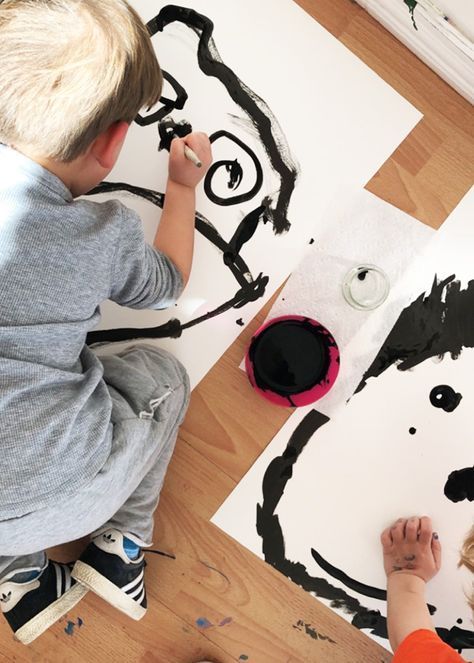

As children enter preschool, their cognitive abilities expand, and they begin to make connections between their marks and the real world. They start to draw simple representations.
- Materials: Slightly thinner crayons, broader markers, chunky colored pencils. Large paper is still beneficial. Introduce tempera paints with brushes.
- Activities:
- Simple Shapes: Encourage drawing basic shapes like circles, squares, and triangles, which form the foundation for more complex images.
- Early Figures: Guide them in drawing simple stick figures or “blob” people, emphasizing body parts and faces.
- Themed Prompts: Ask them to draw things they love: their family, pets, favorite toys, or animals. Suggest drawing an easy car drawing or familiar objects from their home.
- Storytelling: Encourage them to tell you a story about their drawing, even if it’s not immediately apparent to an adult. This links drawing with narrative skills.
- Approach: Continue to emphasize the process over the product. Ask open-ended questions like, “Tell me about your drawing,” rather than, “What is that?”
Early Elementary (5-8 years): Developing Skills and Realism

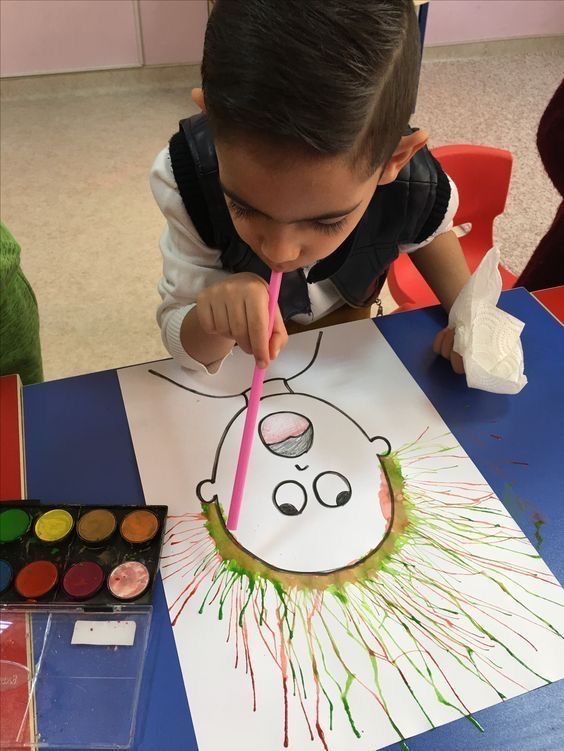
Children in this age group become more goal-oriented in their drawing. They want to create things that look “real” and are often interested in learning specific techniques.
- Materials: A wider range of colored pencils, fine-tipped markers, watercolors. Introduce sketchbooks for regular practice.
- Activities:
- Observation Drawing: Set up simple still life arrangements (e.g., a few fruits, a favorite toy) and encourage them to draw what they see. This is also a great age for outdoor drawing of nature elements like flowers or trees.
- Themed Projects: Focus on specific themes like animals, superheroes, houses, or vehicles. Provide step-by-step drawing guides if they show interest.
- Introduction to Color Theory: Talk about primary and secondary colors, warm and cool colors, and how colors can express mood.
- Character Design: Encourage them to design their own characters for stories or games.
- Approach: Provide gentle guidance and resources. Acknowledge their desire for realism but remind them that practice makes progress. Focus on improving specific skills like drawing lines, shapes, and basic proportion.
Late Elementary & Pre-Teens (8-12 years): Detail, Perspective, and Personal Style

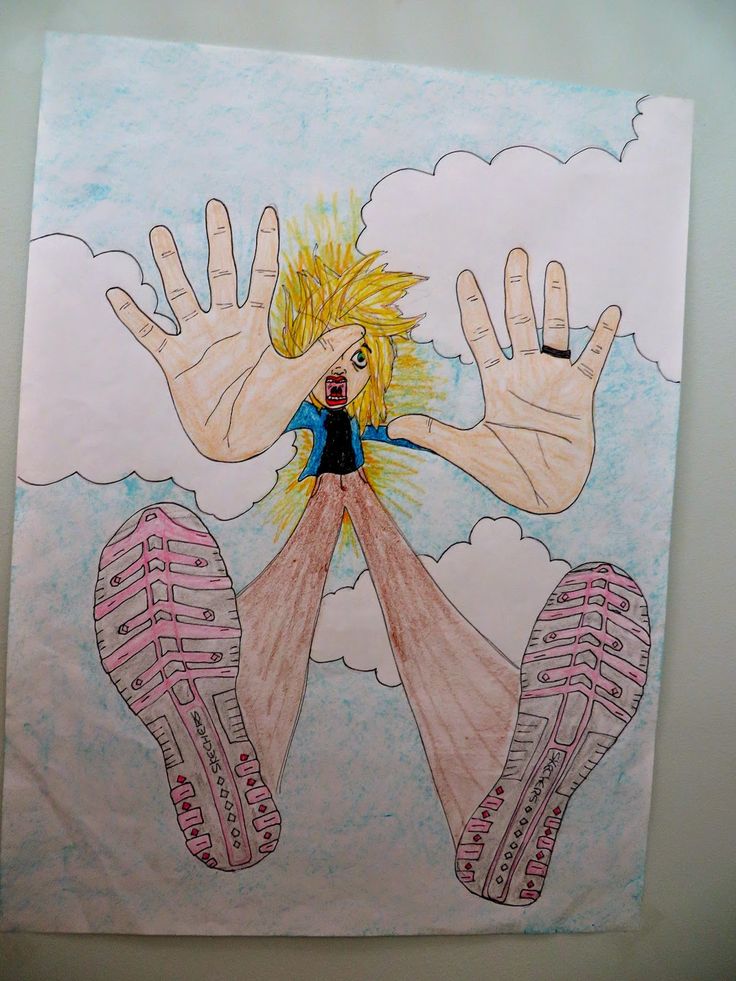
At this stage, children are capable of greater detail, understand basic perspective, and begin to develop their unique artistic style. They may show interest in more advanced techniques and specific subjects.
- Materials: A full spectrum of colored pencils, pastels, charcoal, different grades of graphite pencils, pens, and larger sketchpads. Introduce acrylic paints.
- Activities:
- Complex Subjects: Encourage drawing more intricate subjects like landscapes, portraits (even simplified ones), buildings, or action scenes.
- Basic Perspective: Introduce concepts like vanishing points for simple one-point perspective.
- Exploring Mediums: Allow them to experiment with different art materials to see what they enjoy most.
- Art History & Appreciation: Introduce them to different art styles and artists to broaden their perspective.
- Personal Expression: Encourage them to draw what truly interests them, whether it’s fashion design drawings, fantastical creatures, or abstract patterns. Help them understand how to find inspiration for drawing from their surroundings and imagination.
- Approach: Foster independence and critical self-evaluation. Encourage them to seek out tutorials, join art clubs, or take classes if they show a strong interest. Provide constructive feedback while emphasizing self-discovery.
Essential Tools and Materials for Young Artists

Having the right tools can significantly enhance a child’s drawing experience. While it’s easy to get overwhelmed by the vast array of art supplies, a curated selection tailored to age and interest is usually sufficient.
Paper
- Printer Paper: Inexpensive and abundant, perfect for everyday sketching and practice.
- Construction Paper: Comes in various colors, great for collages and adding colored backgrounds.
- Drawing Paper/Sketchpads: Slightly thicker and more durable, better for colored pencils, markers, and light paint. Look for acid-free options for longevity.
- Watercolor Paper: Essential for any water-based paints, as it prevents buckling and holds pigment better.
- Large Roll Paper: Ideal for toddlers and preschoolers, allowing for expansive movements without hitting the edges. Also great for collaborative projects.
Drawing Instruments
- Crayons: A timeless classic. Choose jumbo sizes for toddlers and standard sizes for older children. Opt for washable varieties.
- Colored Pencils: Offer more control and detail than crayons. Available in various qualities; a basic set is fine for most kids.
- Markers: Come in a huge range of colors and tip sizes (broad, fine, brush). Washable markers are a parental lifesaver.
- Pastels (Oil and Chalk): Introduce these for older children. Oil pastels offer vibrant, blendable color. Chalk pastels are dusty but can create beautiful, soft effects.
- Charcoal: A fantastic medium for exploring shading and values. Comes in sticks or pencils. Best for older children due to messiness.
- Graphite Pencils: A set of pencils with different hardness (e.g., 2B, HB, 2H) can teach older children about line weight and shading.
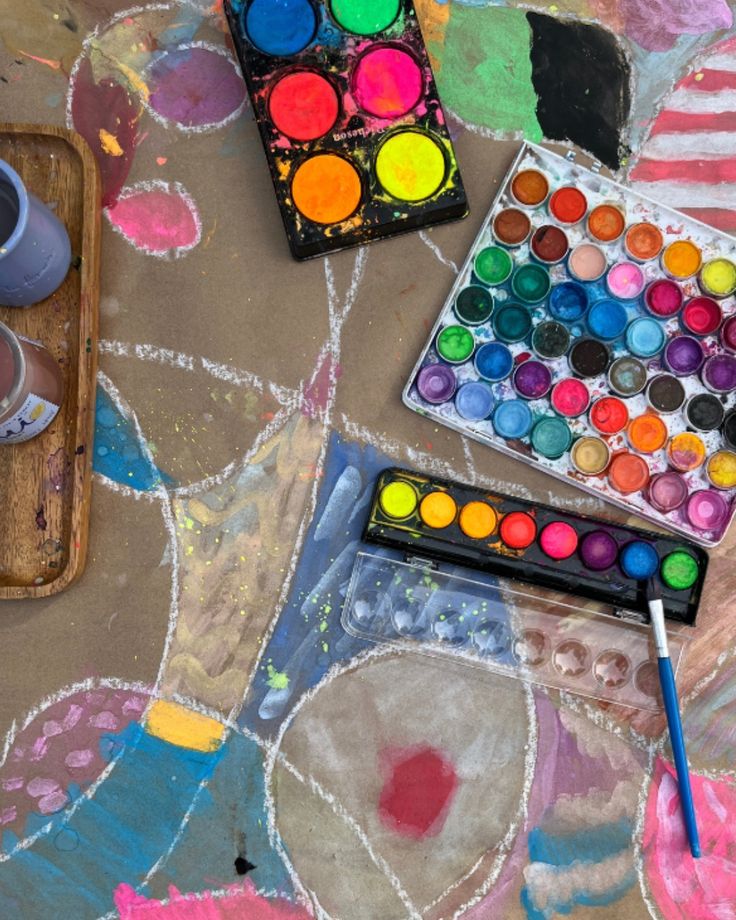

Paints
- Finger Paints: Essential for sensory exploration in toddlers. Non-toxic and washable are key.
- Tempera Paints: Opaque, vibrant, and quick-drying, making them excellent for preschoolers and early elementary children.
- Watercolors: Transparent and delicate, perfect for experimenting with washes and blending for older children. Pans or tubes are available.
- Acrylic Paints: Versatile and opaque, good for mixed media and working on various surfaces. Best for older children as they are permanent when dry.
Erasing and Sharpening Tools
- Erasers: Standard rubber erasers for pencils. Kneaded erasers are excellent for charcoal and pastels, as they lift pigment without smudging.
- Pencil Sharpeners: Manual sharpeners are great for control, but electric ones are faster for larger sets of pencils.
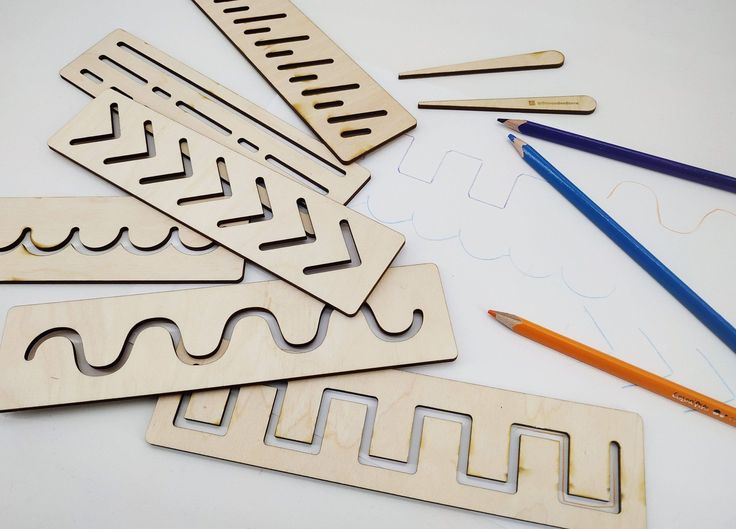
Specialty Items
- Stencils and Templates: Can help younger children practice shapes and figures, building confidence.
- Drawing Apps/Tablets: For tech-savvy kids, digital drawing offers an alternative, mess-free canvas with endless tools.
- Easels: A standing easel can encourage better posture and a different perspective.
Organization and Storage
Keeping art supplies organized is crucial. Bins, caddies, and labeled drawers help children access materials easily and learn to put them away, fostering responsibility and reducing clutter.
Creating an Inspiring Environment for Artistic Exploration
The physical and emotional environment plays a significant role in fostering a child’s love for drawing. It’s not just about the tools but how they are presented and how the child is encouraged.
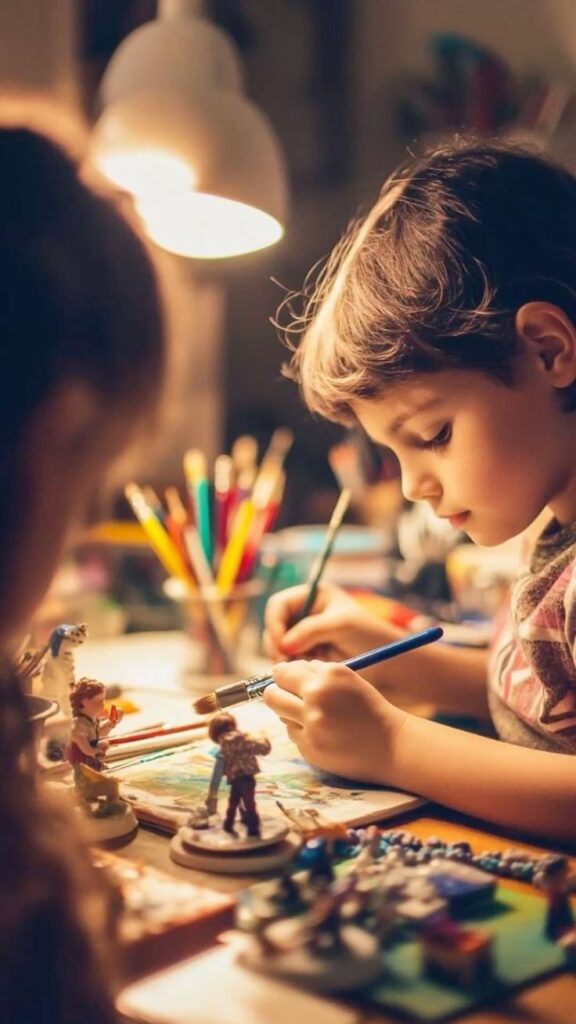

Dedicated Art Space
Designate a specific area for art activities. This doesn’t need to be a large room; a corner of a kitchen table, a small desk, or even a section of the floor can work. The key is consistency. Knowing there’s a place for art signals its importance and makes it easier for children to dive in. Ensure the space is well-lit and easy to clean.
Accessibility of Materials
Keep art supplies visible and within easy reach. If children have to ask for materials every time they want to draw, their spontaneous creative urges might be stifled. Clear containers, open shelves, or a rolling cart can make materials inviting and accessible. This fosters independence and encourages self-initiated art projects.
Displaying Artwork
Showing off a child’s artwork boosts their self-esteem and validates their efforts. Create a mini-gallery on a wall, fridge, or bulletin board. Rotate the artwork regularly to show that their current creations are valued. This reinforces the idea that their work is meaningful and worth celebrating.


Open-Ended Prompts vs. Directed Instructions
While step-by-step drawing tutorials can be valuable for teaching specific skills to older children, it’s crucial to balance this with plenty of opportunities for open-ended exploration. Instead of saying, “Draw a house,” try, “Draw a place where a magical creature might live.” This encourages imaginative thinking rather than simply replicating an image. The goal is to nurture their inner vision, not just their ability to copy.
Focus on Effort, Not Just Outcome
Shift the emphasis from the “perfect” drawing to the effort, the learning process, and the joy of creation. Praise their choice of colors, the intricate details they added, or how hard they focused. Comments like, “I love how you used so many different colors to create this vibrant scene!” are more empowering than, “That’s a good dog.” This fosters a growth mindset, where mistakes are seen as opportunities for learning, not failures.
Joining Art Classes or Workshops
For children who show a deep interest or a particular aptitude, enrolling them in age-appropriate art classes can be highly beneficial. These classes offer structured learning, exposure to new techniques and mediums, and the opportunity to interact with other young artists. They can provide specialized instruction that parents might not be equipped to offer, helping children refine their skills and explore their potential further.


Engaging Drawing Activities and Prompts for Every Child
To keep children engaged and prevent drawing from becoming a chore, a variety of activities and prompts can spark their imagination and introduce them to different aspects of art.
Nature Walks and Outdoor Sketching
Take children on a nature walk with a sketchbook and pencils. Encourage them to draw what they see: a leaf, a flower, a tree, a bird, or even an interesting rock. Outdoor drawing connects them with the environment, sharpens observation skills, and introduces the concept of drawing from life. For younger kids, even just collecting interesting natural items and drawing them back home can be a great activity.
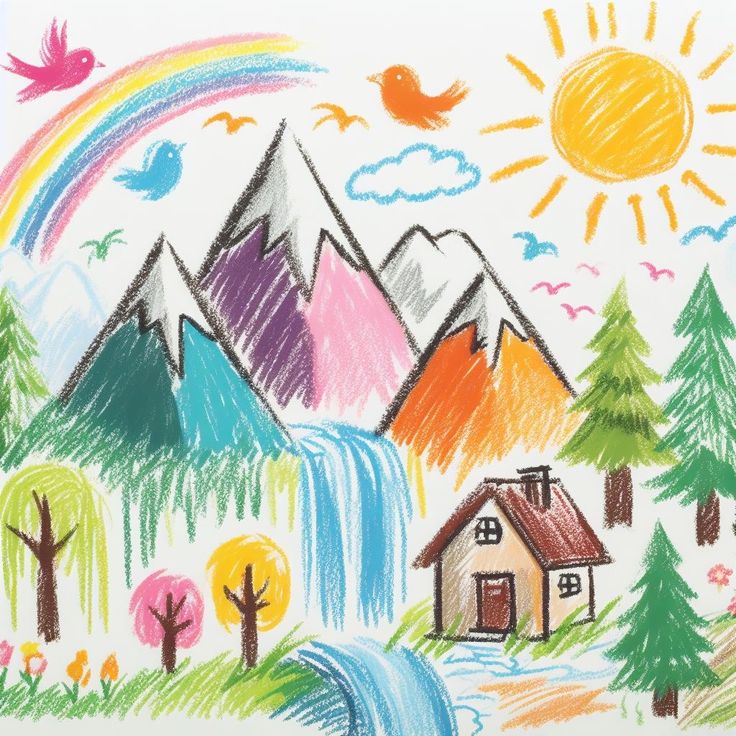

Storytelling Through Pictures
Ask children to create a story using only drawings. This could be a comic strip, a simple picture book, or just a sequence of images on a single page. Give them a prompt like, “Draw a story about a brave knight and a sleepy dragon,” or “Show what happens on a rainy day.” This activity enhances narrative skills and encourages sequential thinking.
“Blind Contour” Drawing
This exercise is fantastic for improving observation and hand-eye coordination. Instruct the child to look at an object (e.g., their hand, a shoe, a fruit) and draw its outline without looking at their paper and without lifting their pencil. The result is often abstract and wobbly, but the process forces intense observation of contours.
“Exquisite Corpse”
A collaborative and fun activity, particularly good for groups. One person draws a head on a piece of paper, folds it to conceal their drawing (leaving only necklines visible), and passes it to the next person. That person draws the torso, folds, and passes. The last person draws the legs/feet. Unfold to reveal a humorous and often surreal creature!
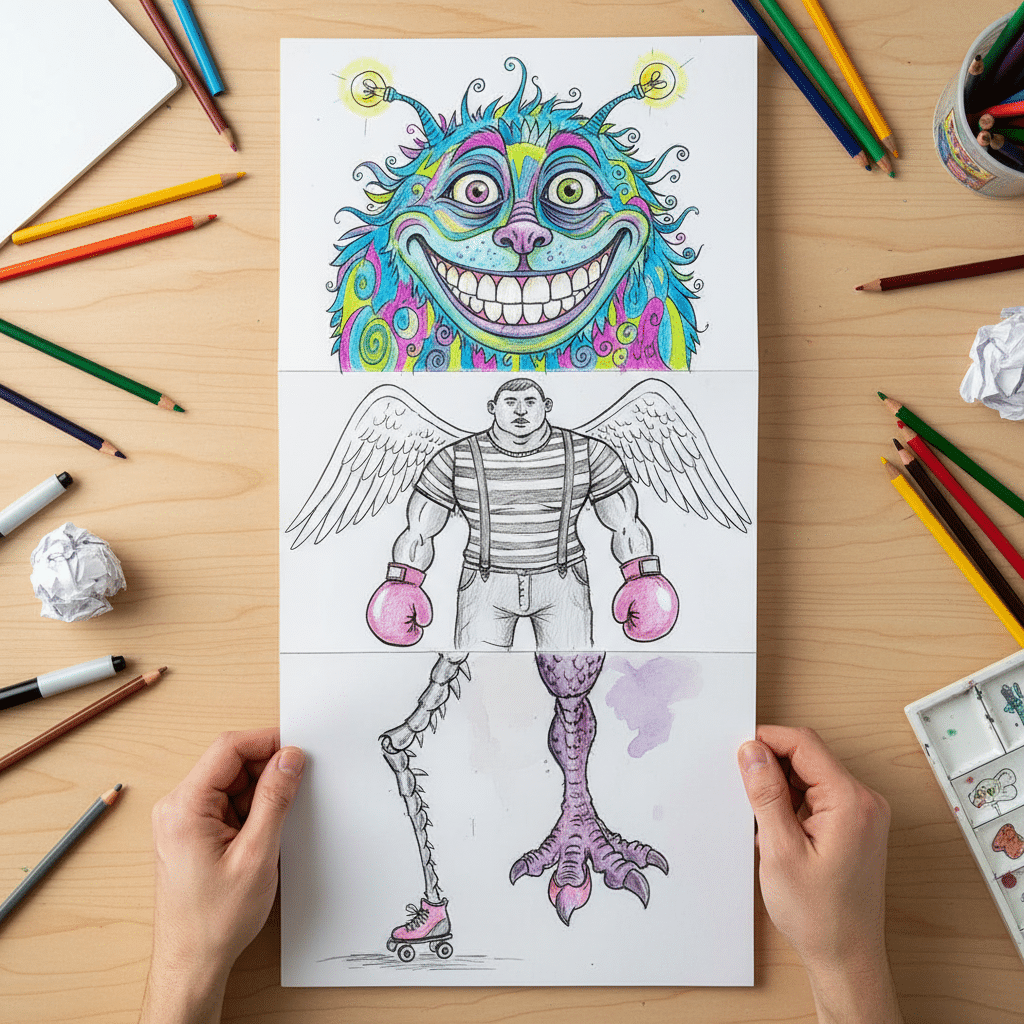
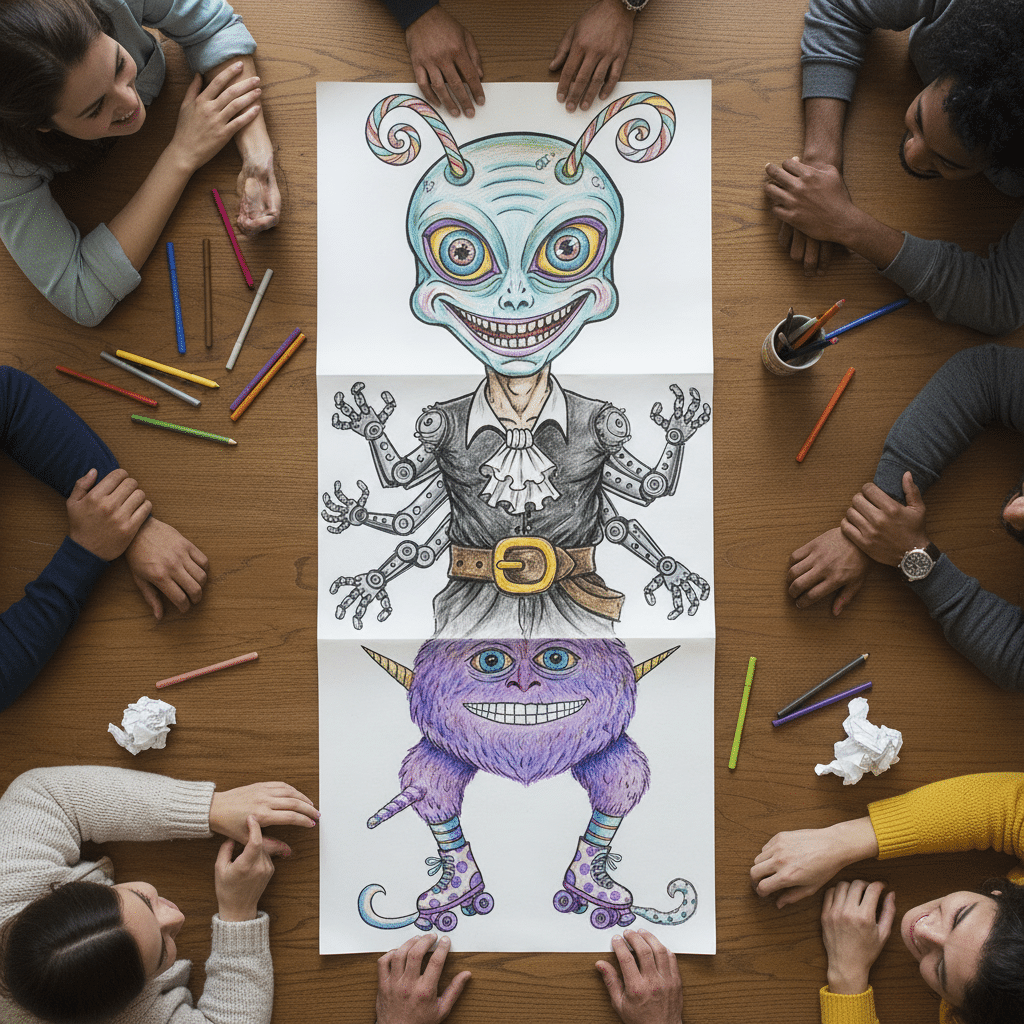
Symmetry Drawing
Fold a piece of paper in half. On one side of the fold, draw half of an object (e.g., half a butterfly, half a face, half an abstract shape). Then, have the child open the paper and complete the other half, mirroring your drawing. This teaches children about symmetry and spatial reasoning.
Drawing from Observation: Still Life
Set up simple still life arrangements with everyday objects. For younger children, start with 2-3 distinct items like a toy, a fruit, and a cup. For older children, introduce more complex arrangements with varying textures and light sources. This activity is fundamental for developing realistic drawing skills and understanding perspective.
“Draw What You Hear/Feel”
For an abstract approach, play a piece of music and ask children to draw what they “see” or “feel” in the music using lines, shapes, and colors. Alternatively, ask them to draw how they feel right now, encouraging emotional expression through abstract art.

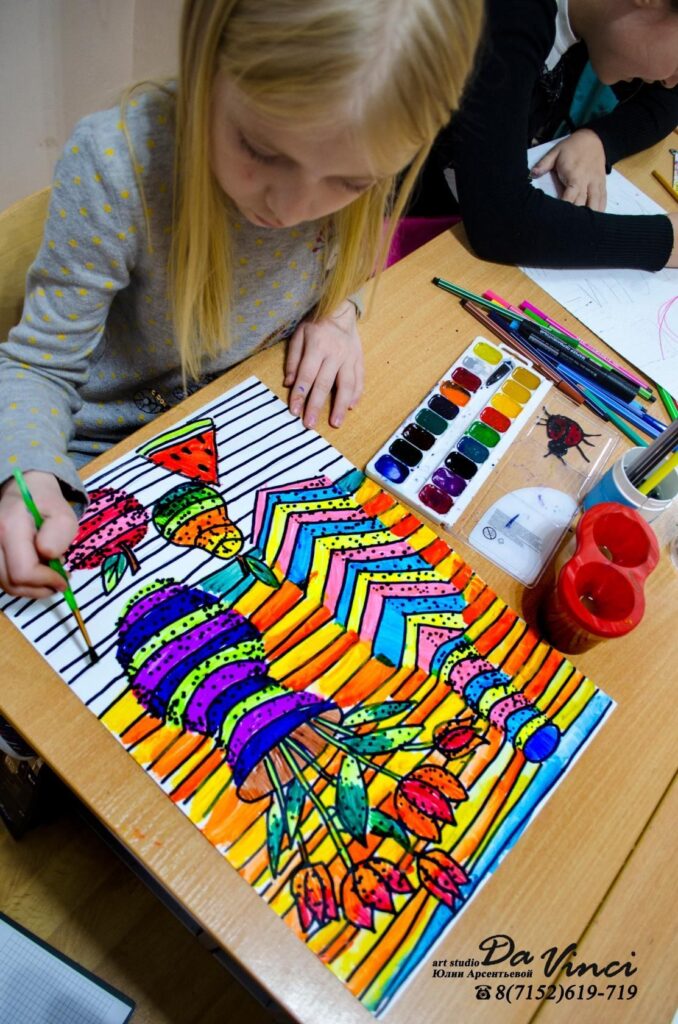
Daily Doodle Challenges
Provide a daily drawing prompt, such as “Draw something that makes you laugh,” “Draw your dream pet,” or “Design a new cartoon car drawing idea.” These small, consistent challenges encourage regular practice and push them to think creatively within parameters. The consistent exposure to drawing keeps their skills sharp and their imagination active.
Overcoming Common Challenges and Fostering a Growth Mindset
Even with the best intentions, children (and parents) can encounter obstacles in their artistic journey. Addressing these challenges with a positive, growth-oriented approach is crucial.
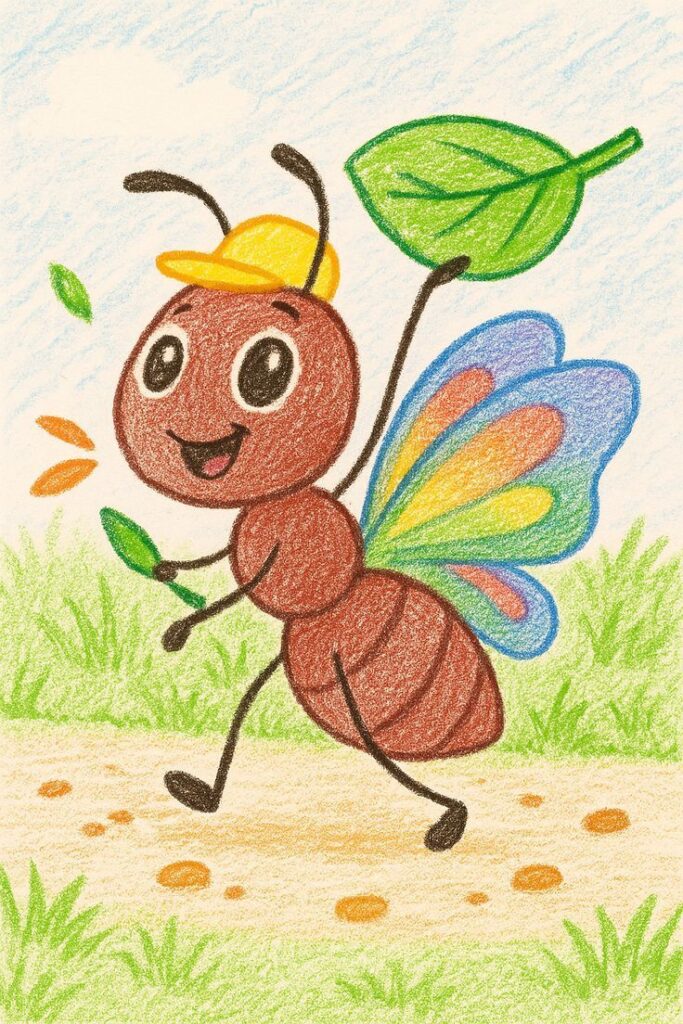

“I Can’t Draw” Syndrome
Many children, especially as they get older and become more self-aware, declare, “I can’t draw!” This often stems from a comparison to others or an internal perfectionist streak.
- Solution: Reframe the concept of “good” drawing. Emphasize that art is about personal expression and that there’s no single “right” way. Share examples of different art styles, including abstract art, to show the vast possibilities. Remind them that every artist started somewhere. Focus on small, achievable steps and celebrate effort.
Fear of Making Mistakes
The fear of ruining a drawing can paralyze a young artist. This leads to hesitant lines or an unwillingness to experiment.
- Solution: Provide plenty of scrap paper. Encourage them to draw lightly first. Teach them that erasers are tools for exploration, not just correction. Talk about “happy accidents” in art. Demonstrate that even professional artists make many sketches before their final piece. The message should be: “Mistakes are part of the learning process.”
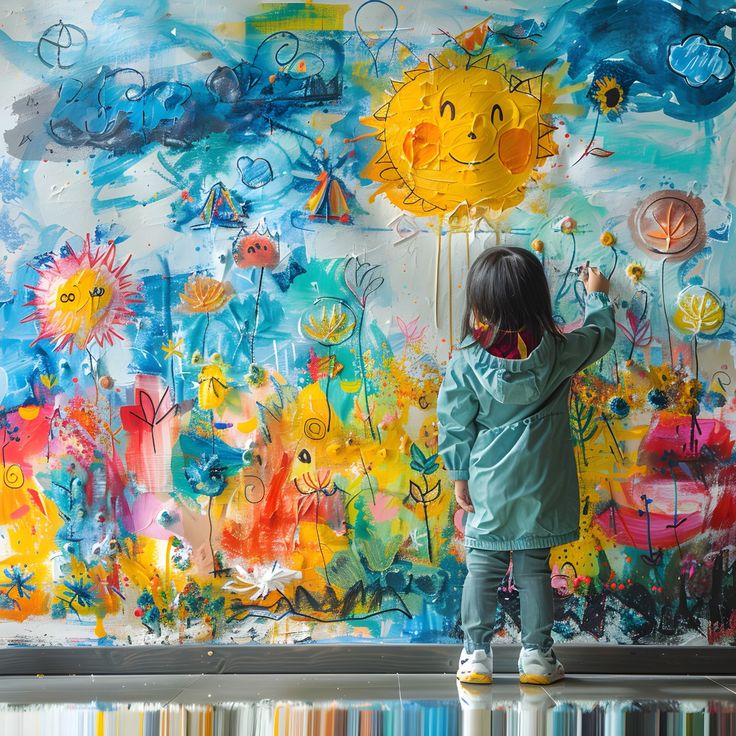
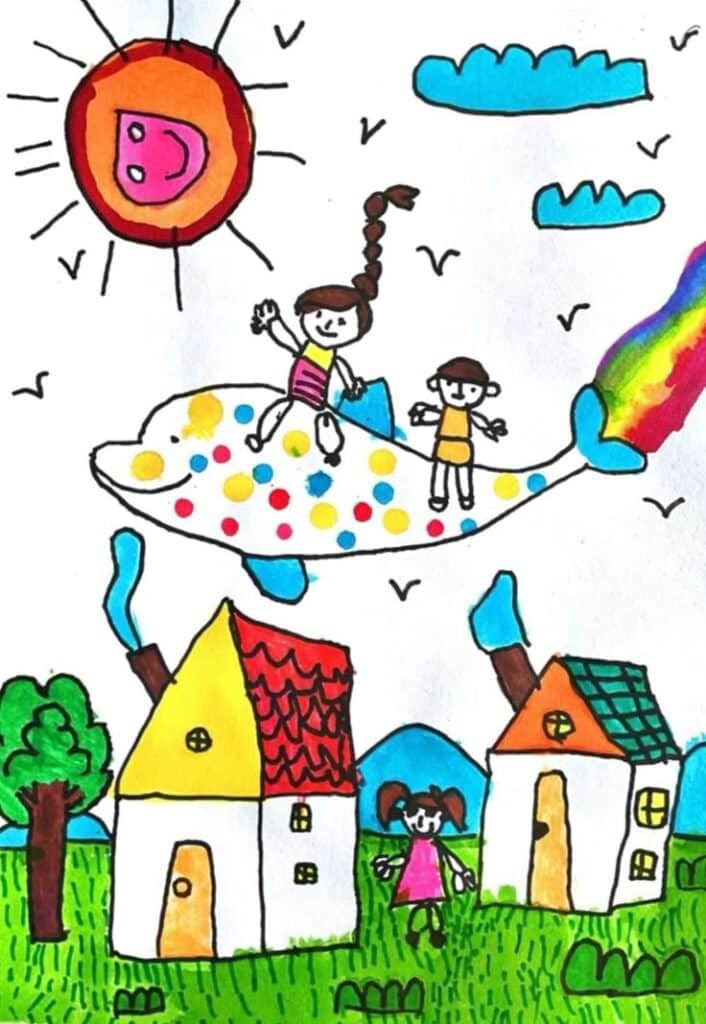
Comparison with Others
When children compare their artwork to peers or even adults, they can become discouraged if they feel their work isn’t “as good.”
- Solution: Reiterate that art is a personal journey. Each person has a unique style and perspective. Focus on their individual progress and growth rather than external comparisons. Celebrate their unique voice. Remind them that the purpose of drawing is not competition, but personal joy and expression.
Maintaining Interest
Sometimes children’s interest in drawing waxes and wanes. Forcing the activity can backfire.
- Solution: Observe their current interests and incorporate them into drawing prompts. If they love superheroes, suggest drawing their own. If they’re fascinated by space, draw aliens or planets. Introduce new materials or techniques to keep things fresh. Sometimes, taking a break and revisiting art later can reignite enthusiasm. Make it about discovery, not obligation.
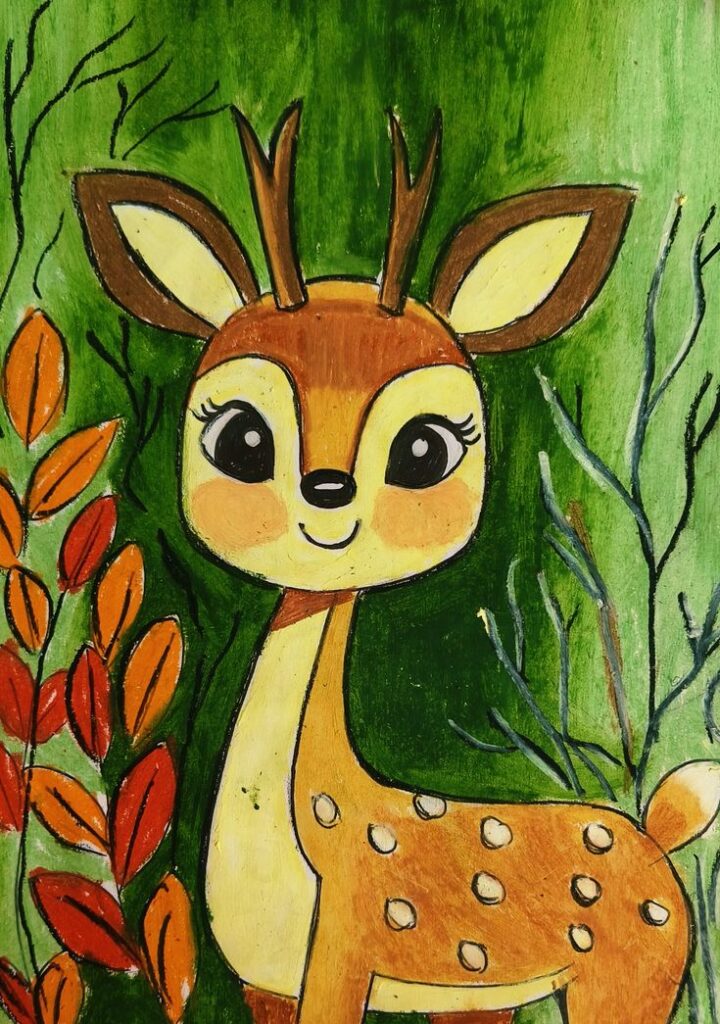

Parental Involvement vs. Dictation
Parents often want to help, but sometimes “helping” can become dictating, leading to frustration for the child.
- Solution: Be a facilitator, not a director. Provide materials, offer encouraging words, and ask open-ended questions. Instead of drawing for them, draw with them. Model the joy of drawing without imposing your own artistic vision. Let their ideas lead the way, even if the final product doesn’t match your expectations. Your presence and genuine interest are more valuable than your artistic input.
Conclusion


Engaging with draws for kids is an investment in their holistic development, offering far more than just pretty pictures. It’s a powerful catalyst for imagination, a crucial building block for fine motor skills, and a vital outlet for emotional expression. From the bold, uninhibited strokes of a toddler to the detailed sketches of a pre-teen, each mark on the page represents a moment of learning, discovery, and growth.
By providing age-appropriate tools and activities, fostering an encouraging environment, and embracing the process over the product, we empower children to harness the full potential of their creative minds. Drawing teaches children to observe, interpret, problem-solve, and communicate in ways that transcend words. It builds confidence, nurtures resilience, and cultivates a unique voice that will serve them well in all aspects of life. So, hand your child a crayon, roll out the paper, and step back to witness the magic unfold. The canvas of childhood is waiting to be filled with their extraordinary visions. Let’s unlock their creativity, one draw at a time.
- 31shares
- Facebook0
- Pinterest31
- Twitter0

